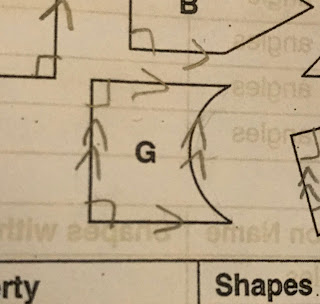
Hitting the Bullseye During a recent scan through my Twitter feed, I came across a tweet from Megan Hayes-Golding ( @mgolding ) about a problem she had shared: The original problem came from LC Dawson ( @CDawson ) that I had missed when it was originally shared on April 10: I loved the simplicity of the problem and thought it was very accessible mathematically but still promoted thinking, problem-solving and mathematical reasoning. This problem can easily be adapted to allow for more challenging or easier versions and students can make their own to share with a friend. The other thing I liked about this is that though students might have the mathematical tools to solve the problem, they probably had never seen anything like this before. Solving non-routine problems in mathematics class is important because students can very easily fall into the trap of being good "problem performers" and not good "problem solvers". More about that here from the ...

